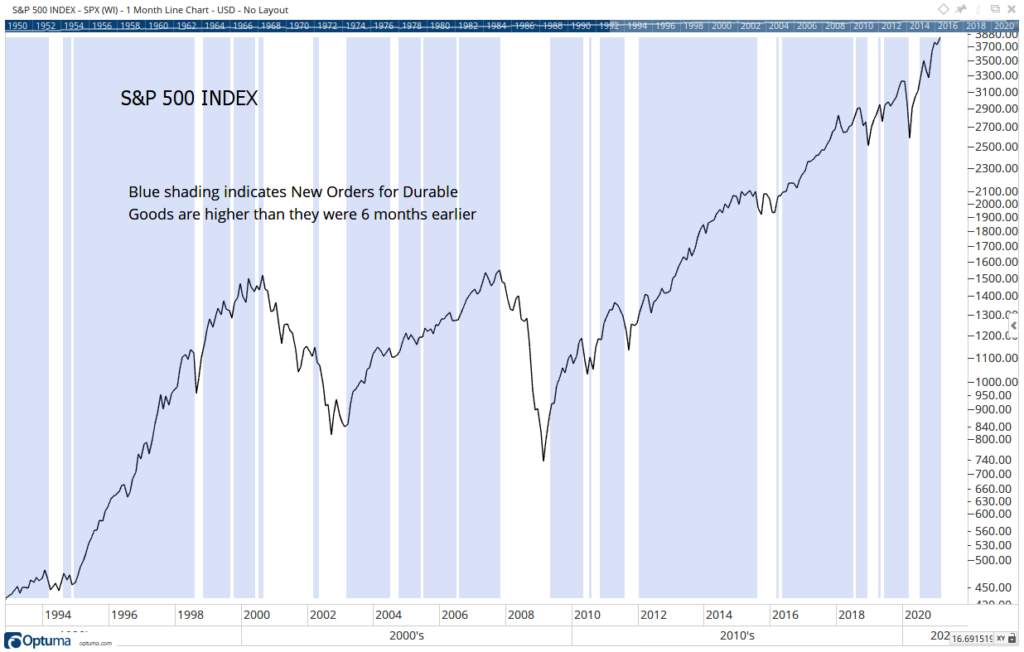Last week, the Census Bureau reported new orders for durable goods.
The Wall Street Journal noted the report was good news for the economy:
Demand for long-lasting manufactured goods jumped in January, as the U.S. economic recovery gained momentum at the start of the year.
New orders for durable goods — products designed to last at least three years, such as computers and machinery — increased 3.4% … in January…
It was the ninth straight month of gains and the largest percentage increase since July 2020. Economists surveyed by The Wall Street Journal expected a 1% gain, after an upwardly revised 1.2% increase the previous month.
History suggests the report is bullish for the stock market.
Durable goods are items expected to last at least three years. That includes kitchen appliances and cars. Durable goods also include factory machinery and construction equipment.
Trends in durable goods orders reflect consumer and business confidence.
Consumers make big purchases when they’re optimistic about the future. That’s especially true for financed purchases. Financing shows confidence in the ability to make payments.
Pessimistic consumers delay purchases. Think of your household. If you’re worried about losing your job, you probably avoid new debt. This idea applies to the larger economy. Millions of households behave that way.
These same factors affect business decisions as well. Businesses make big purchases when managers are optimistic and defer decisions when they are pessimistic.
New orders for durable goods are one of the few indicators that combine consumer and business confidence, making it a leading economic indicator.
This indicator also forecasts trends in the stock market. Avoiding the stock market when new orders are lower than they were six months ago beats a buy-and-hold strategy.
The Commerce Department began publishing this data in 1992. That sell signal avoided every significant decline since then.
The chart below shows the S&P 500 Index, the black line, with blue bars indicating when new orders were up compared to a year before.
S&P 500 and Durable Good Orders

Source: Optuma.
Durable Good Orders Could Turn Bearish
The S&P 500 generally declined when orders declined.
New orders for durable goods are telling us the stock market could move higher after a brief pullback.
But the news on durable goods could be so good it’s bearish. After rising sharply, a pullback in orders could develop in the coming months. Investors should implement defensive strategies in this environment and be ready for a bear market.
Michael Carr is a Chartered Market Technician for Banyan Hill Publishing and the Editor of One Trade, Peak Velocity Trader and Precision Profits. He teaches technical analysis and quantitative technical analysis at the New York Institute of Finance. Mr. Carr is also the former editor of the CMT Association newsletter, Technically Speaking.
Follow him on Twitter @MichaelCarrGuru.





